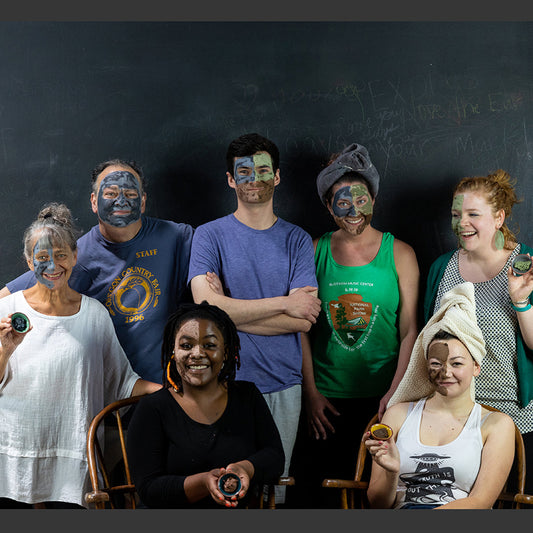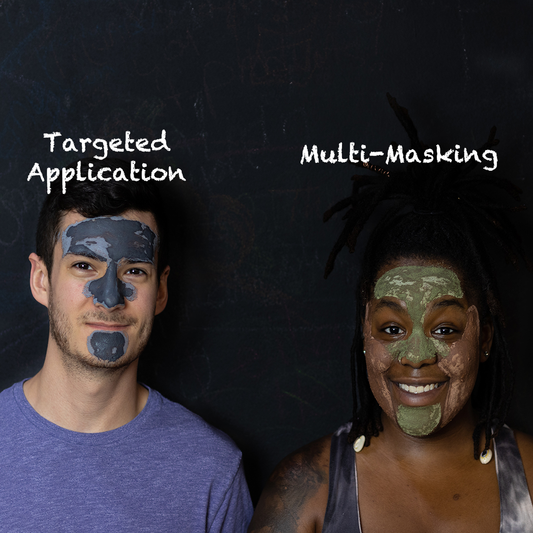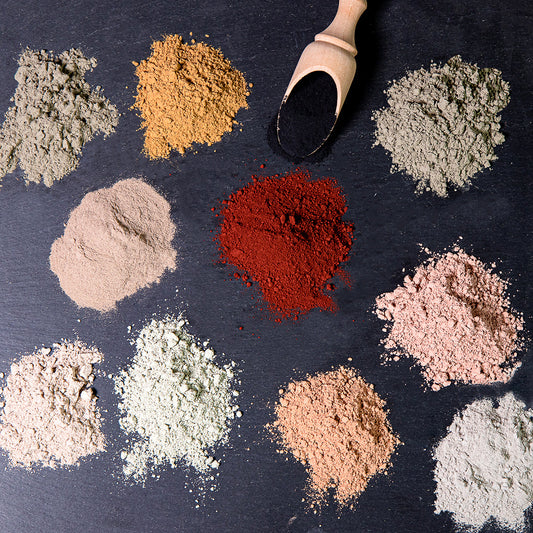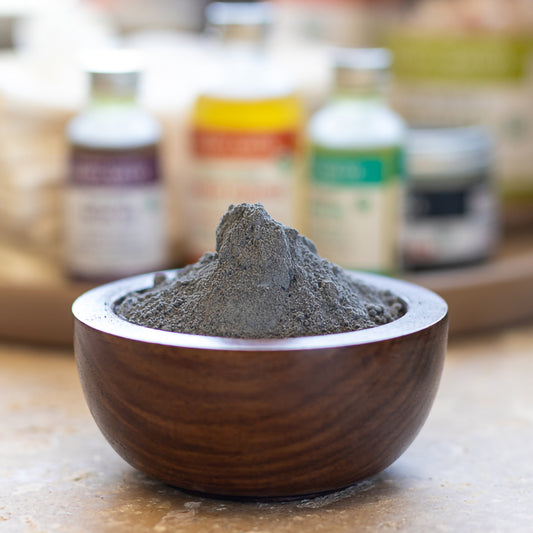
Clay Face Mask: Rose & Hibiscus
- Out Of Stock
Clay Face Masks can work wonders for your skin. The simple natural ingredients can help exfoliate and soften skin, draw out impurities, minimize pores, and remove excess surface oil.
Clay masks are a simple way to give your skin a boost and some extra TLC without getting regular facials. Our skin comes into contact with so much pollution, dirt, and grime that we sometimes need a natural product to help draw out deep-seated impurities that normal cleansing leaves behind.









The topical use of clay as a beauty ritual traces back to the earliest civilizations. From Ancient Egypt to Ancient Rome and even during the Renaissance, men and women used the medicinal properties of clay to achieve a brighter, smoother, and more youthful complexion.
We harness the power of incredible clays and botanical ingredients. Powerful yet gentle, our clay masks help cleanse, clarify and balance skin. All it takes is about 15 minutes to rid your skin of excess oil, dirt and debris, leaving your pores clean and your skin happy.
What can a clay mask do for you?
Quick Tip: Mix up a tiny bit of your clay mask and use it as a spot treatment on active acne.
We love our powder clay masks because, unlike the already prepared gel and cream masks, powder masks can be easily customized with extra mix-in ingredients (see our recipes) to provide your complexion with exactly what it needs as the your facial skin changes with the seasons or over time. The powder formula also stays fresh without preservatives.
For more information about clays and clay masks, please read our blogs (related articles) below!
Please visit our Product Knowledge Base for tips to help choose Natural Facial Skin Care products.

Clay masks that can naturally deeply clean your complexion, are a simple way to give your skin a boost and some TLC without getting regular facials.
Read Post
Our face has different zones in which the skin can vary in thickness, texture, pore size and the number of oil-producing glands. Each zone has different needs and requires individual attention.
Read Post
Clay facial masks are an easy way to pamper yourself and invigorate your skin. Creating an application technique that works for your skin will get you one step closer to a beautiful complexion.
Read Post
Clays have been used in skin care since ancient times. Clays have the ability to exfoliate, absorb excess oils, cleanse dirt and impurities and invigorate the skin. So, let’s learn about clay.
Read Post
Clay powders can be mixed with many ingredients for an added benefit or just for fun. Many websites provide recipes for additives, but they do not understand the science of clay.
Read Post